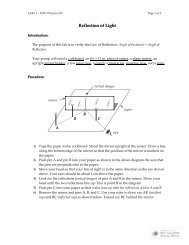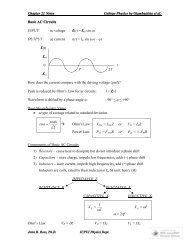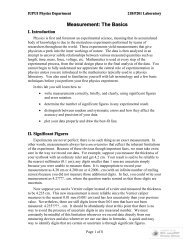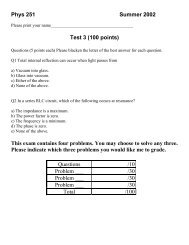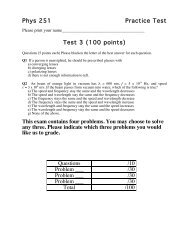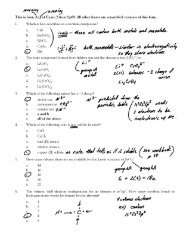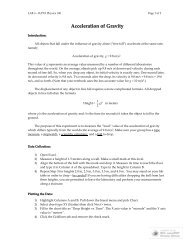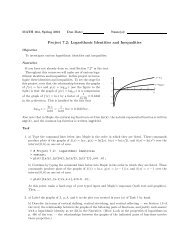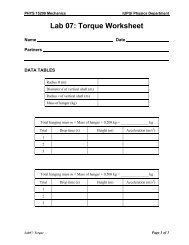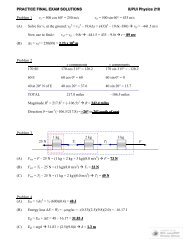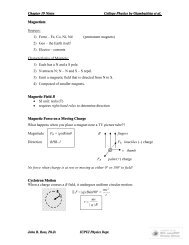Some responses - Web Physics
Some responses - Web Physics
Some responses - Web Physics
You also want an ePaper? Increase the reach of your titles
YUMPU automatically turns print PDFs into web optimized ePapers that Google loves.
19. How to motivate the students to think conceptually and basically enjoy taking a physicscourseThis may be the “$64,000 question.” I have no simple prescription for it. I can say a fewthings, though. First, getting students to enjoy a class is a bit different from getting themto respect it. The former requires that you be funny and personable, that the text be easyto read, that the work not be too difficult, and that they are able to do it on their owntime, preferably with their friends. That will not earn their respect, though, and theyprobably will not learn much. Getting them to respect the class requires that you givethem good reasons to do things that are difficult, that you work as hard as they do, andthat you are honest and fair. I usually shoot for respect, but I do try to be personable, andfunny when possible. As far as thinking conceptually goes, students take their cues as towhat is important from the things you spend time on, and the way you assign points. Ifyou want conceptual understanding, ask conceptual questions, in class, on homework,and on exams.20. I think the main challenge is to not overdo the WarmUp exercise, so that the students donot get bored during the lecture (since they have worked on the material on their own). Iwould appreciate more time spent on explaining how to keep the balance and to alwayshave something up one's sleeve to keep the audience attention.I agree. Never spend too much time on things that the students have done (this includesgoing over homework, whether a TA dos it or a professor). I would add that I don’t “goover” the warmups at all. I use them as part of the presentation, as jumping off points forPeer instruction, as seques between topics, etc.21. During the talk, it would be helpful to discuss the logistics overhead of implementingJiTT.<strong>Some</strong> faculty use warmups at every lecture, others do it less often, but I think once/weekis the minimum. I personally do it twice per week, whether I have a course tht meets twiceor three times. (In that case, I do a puzzle the third day).22. What do you do if only a small number of students complete the JiTT?This never happens to me. I get about 80% <strong>responses</strong> to any given warmup assignment,with about 90% of the students doing them most of the time. To make this happen, Isuggest being fairly liberal with the grading (I grade on “an honest effort” rather thancompletely correct physics). I also suggest making the assignments regular, mine due areevery MW at 10.23. Has JiTT been implemented successfully in introductory physics labs?I use “prelabs” that are similar to warmups. Students are asked to read the lab handoutsbefore coming to lab, and to answer some questions. The questions usually focus on theapparatus, or one the analysis, though sometimes they focus on physics concepts as theydo in lecture.24. If the assignment is due shortly before the lecture, how can you incorporate unexpected<strong>responses</strong> into your lecture in a meaningful manner? I think it would take time for me to



